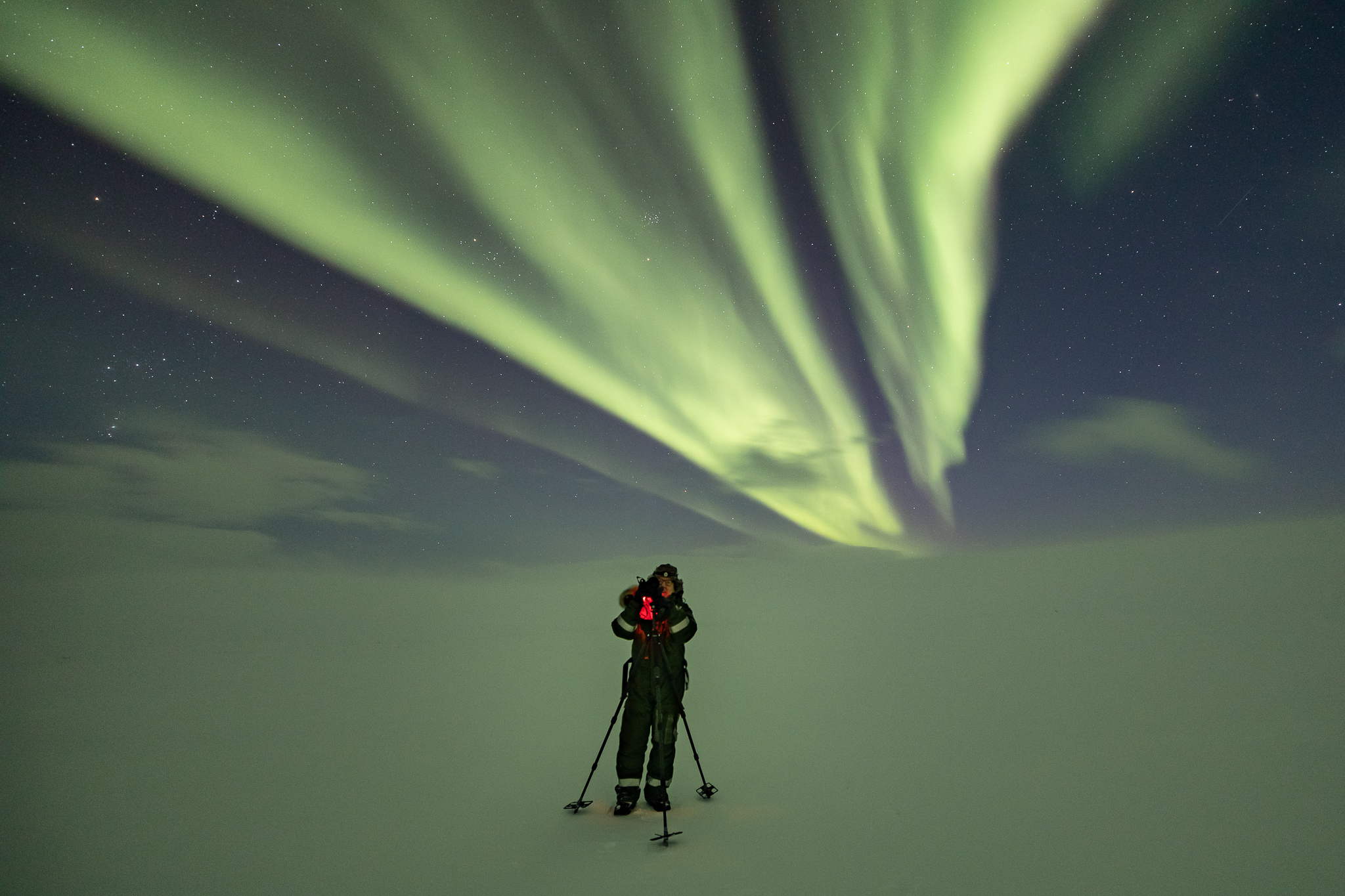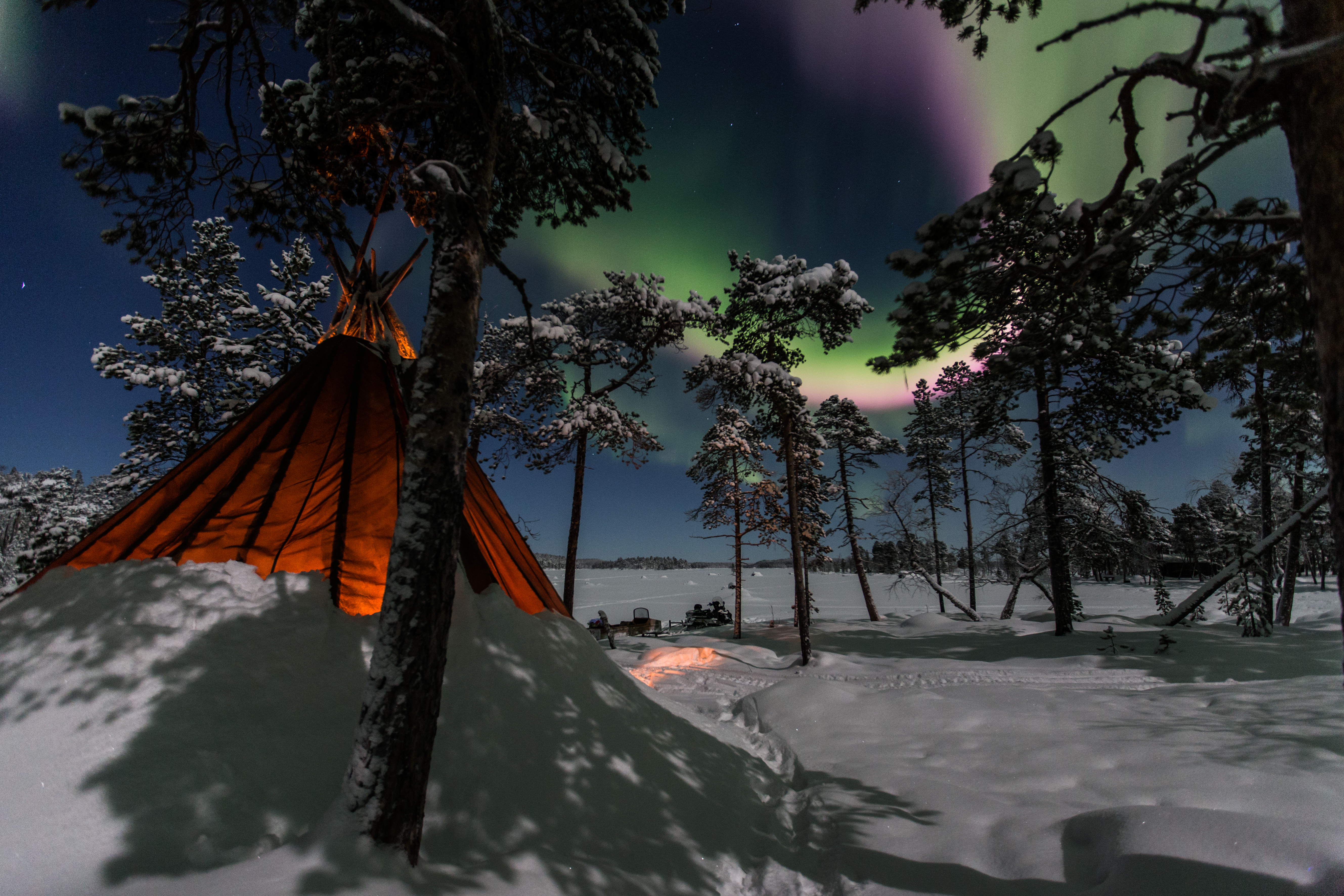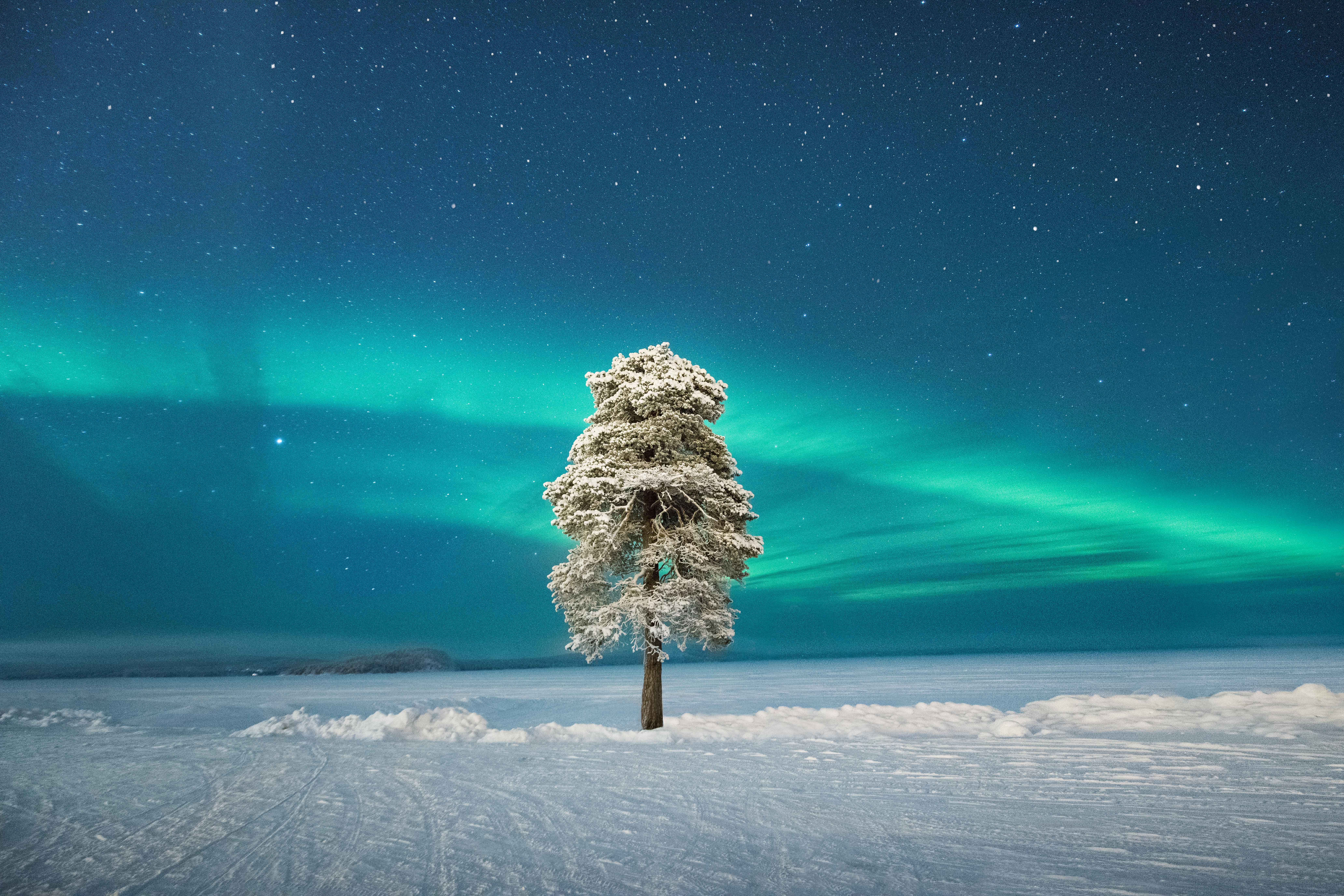Winters are long in Finnish Lapland, Swedish Lapland and Northern Norway, but the locals embrace it like no other season and, rather than cowering inside, you’ll find them outside enjoying snow-based activities such as dog sledding, snowshoeing, cross-country skiing, snowmobiling and more.
There is a perception that the Arctic Circle is constantly pitch black for months on end, but nothing could be further from the truth. It is true that the sun disappears below the horizon for a few days or weeks, depending on how far north you venture but there is always plenty of residual light reflected by the snow.
In late December and early January, when the sun doesn’t rise, the land is bathed in a blue/grey light which the locals call “Blue Time”. It is almost spooky, certainly ethereal and creates a genuine sense of being somewhere very different indeed. Once February arrives, the days really begin to lengthen, and by the end of March, it becomes almost tangible as the daylight increases by almost 10 minutes daily. In March, the days are far, far longer than they are here in the UK or Europe.
Winter is a great time to travel if you enjoy stunning landscapes and activities that are very different from anything we have at home. Winter is a time when you can freely tick items off your bucket list: Dog sledding? Done. Slept in the ICEHOTEL? Done. Seen the Northern Lights? Done.
Most importantly, winter brings dark, dark skies which highlight billions of stars and, of course, the Aurora Borealis. To stand on a frozen lake in the middle of nowhere and watch the heavens turn above your head is an amazing, almost spiritual experience; it’s something more again when the Aurora is blazing across the Arctic firmament.

While December gets less daylight, it is often said that early November is the darkest time of year because there is generally less snow cover to reflect the light. November isn’t always the prettiest time of year in the north, but the combination of darkness and the proximity to the autumnal equinox means that the Aurora can very often be seen at their best.
Late November and December bring the big freeze and heavy snowfall, which creates the sort of Narnia-like landscapes that you only ever see on Christmas cards. Of course, snow clouds can obscure the Northern Lights, but the extended darkness enhances your chances of seeing the Aurora – remember, you can’t see them during daylight hours.
The snow usually lies crisp and deep and reasonably even from mid-November onwards, which is ideal for all the exciting winter activities and also enhances the Northern Lights chasing options – evening snowmobile safari anybody?
For a few weeks in December, the sun doesn’t appear above the horizon, and this brings a remarkable phenomenon which the locals call “Blue Time”. From about 10 am until 2 pm, the land is enveloped in a grey/blue light that is neither day nor night and could be described as being almost ethereal.
November and December bring colder weather and shorter days, although it is often said that cold nights yield more Northern Lights, as do longer hours of darkness, so perhaps we should count these things as a blessing.
In early January most places in the Aurora Zone welcome back the sun that bathes the landscape in a pinkish glow, a remarkable sight to behold. Temperatures in January can be very cold, especially at night when you are searching for the Aurora, but we’ll make sure you are well wrapped up and, it is an oft-held belief that January’s colder weather brings more Auroral displays, so it’s worth braving those sub-zero temperatures.
February often brings slightly warmer temperatures and a lot of accumulated snow, which lies very deep and creates the perfect winter playground. The chances of seeing the Northern Lights are good during either of the two months, and getting away to a drier and frankly more pristine environment is a great post-New Year tonic.
January is a great time to travel if you want to avoid other tourists, as it is not considered to be the peak winter month. As a result, prices are often lower, but all the activities, including Aurora hunting, will be in full swing.
February in the UK is usually dark, wet, windy and cold. Contrast that with the Arctic, where it will still be very cold, but instead of rain, the precipitation falls as fresh, dry snow. February is probably the most popular time to travel into the Auroral Zone, as it is the perfect time to combine daytime activities with evening hunts for the Northern Lights.


Predicting the Northern Lights isn’t particularly straight forward! However, every single holiday we provide has been scientifically designed to give you the best chance of seeing the Northern Lights. We choose a destination based on its auroral record, the lack of light pollution and we select our local guides and experts based on years of experience.
With the sun reaching peak activity and more and more amazing trips to choose from, now really is the best time to travel to The Aurora Zone! Explore some of our favourite trips below….
Image Credits: Wilderness Hotels